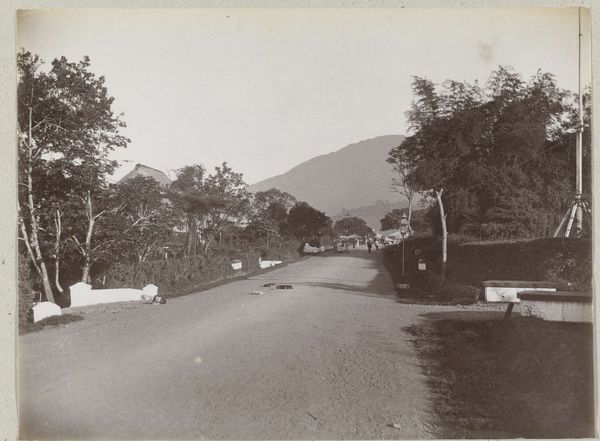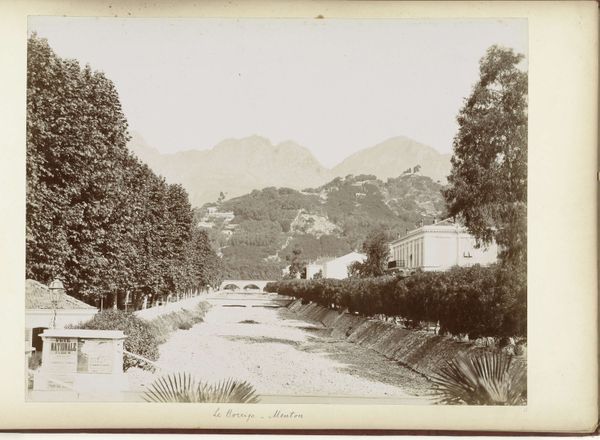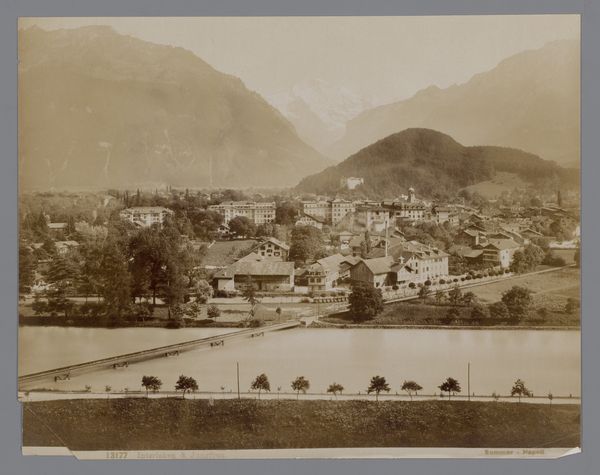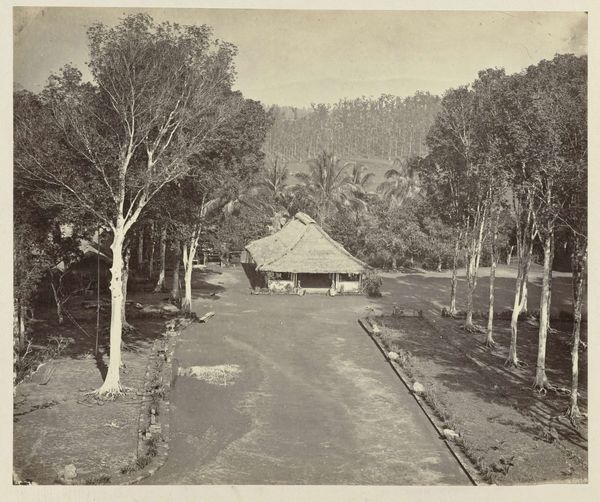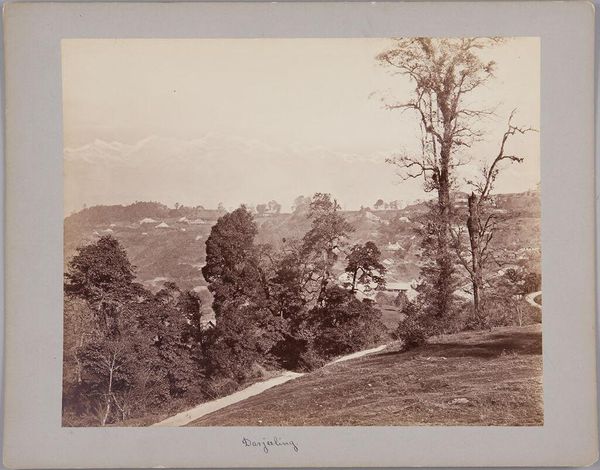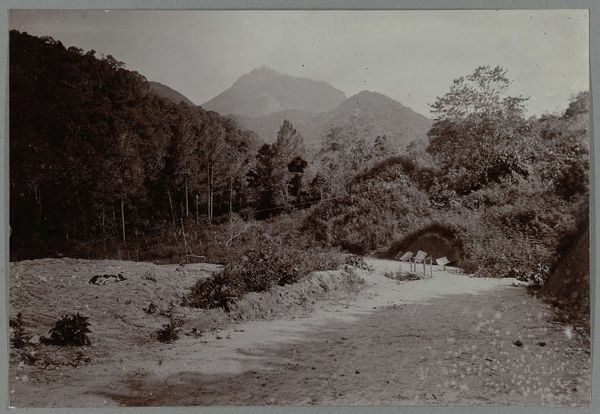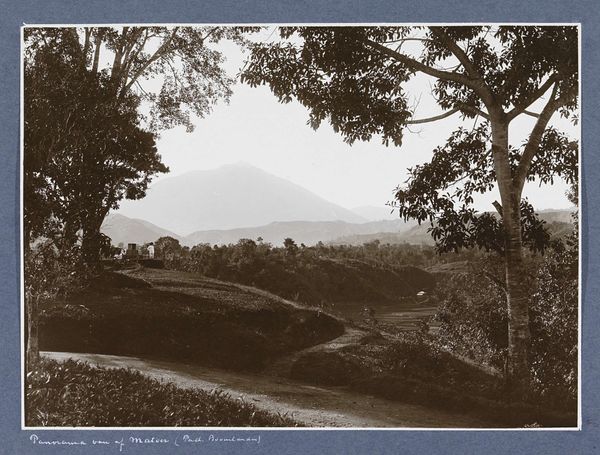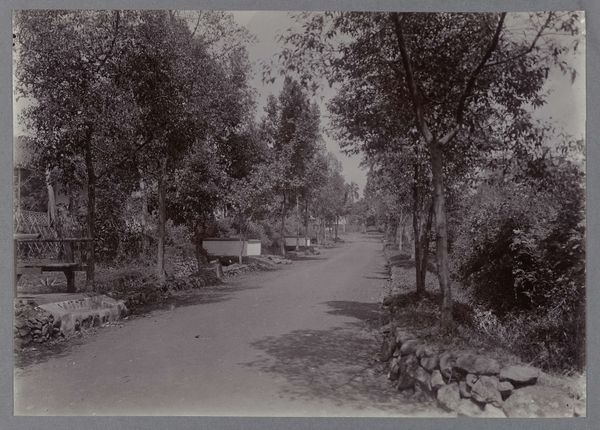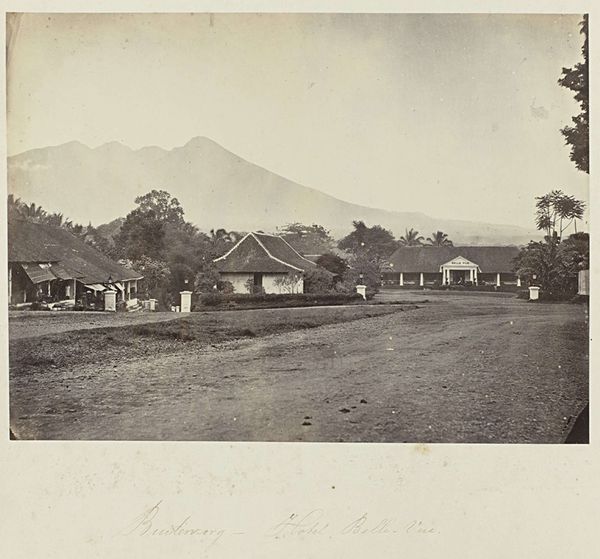
Gezicht op Bukittinggi met op de achtergrond de Marapi 1891 - 1912
0:00
0:00
print, photography
#
black and white photography
#
pictorialism
# print
#
countryside
#
asian-art
#
landscape
#
outdoor photograph
#
outdoor photo
#
photography
#
outdoor scenery
#
mountain
#
monochrome photography
#
realism
Dimensions: height 207 mm, width 277 mm
Copyright: Rijks Museum: Open Domain
Editor: Here we have "Gezicht op Bukittinggi met op de achtergrond de Marapi," taken sometime between 1891 and 1912 by Christiaan Benjamin Nieuwenhuis. It’s a black and white photograph. What strikes me is how carefully composed it is— almost staged. What do you see in it? Curator: It is indeed meticulously staged, or perhaps "composed" is a better word given the time period. As a historian, I’m immediately drawn to considering this image as a form of colonial representation. Nieuwenhuis isn’t simply documenting a landscape; he’s participating in the visual construction of a colonial space. Note the careful arrangement of indigenous figures along the road, leading the viewer’s eye towards the Dutch buildings, all framed by the majestic volcano. Editor: So you’re saying it’s less about the actual place and more about a power dynamic being presented? Curator: Precisely. Consider the role photography played in shaping European perceptions of the colonies. Images like these weren't objective records; they were powerful tools that reinforced ideas of Dutch authority, progress, and even the exotic allure of the East Indies. Think about who the intended audience was for this image and what messages it conveyed. The composition itself, that elevated viewpoint looking *down* upon the town, reinforces a hierarchical gaze. Editor: That makes a lot of sense. The presence of local people carrying goods further highlights their role. I wonder, how would people back in the Netherlands react when looking at it? Curator: I imagine it would confirm existing notions of the colonies as both a source of resources and a territory under Dutch control. Images like this, reproduced widely, solidified those ideas within the collective imagination. Also, photography during this time also presented notions of truth. Photography can, however, also be staged for manipulation or control. What did you learn from this work of art? Editor: I will definitely reflect upon this photography and think deeper when examining its intent. It is so true; photographs are rarely ever objective!
Comments
No comments
Be the first to comment and join the conversation on the ultimate creative platform.
